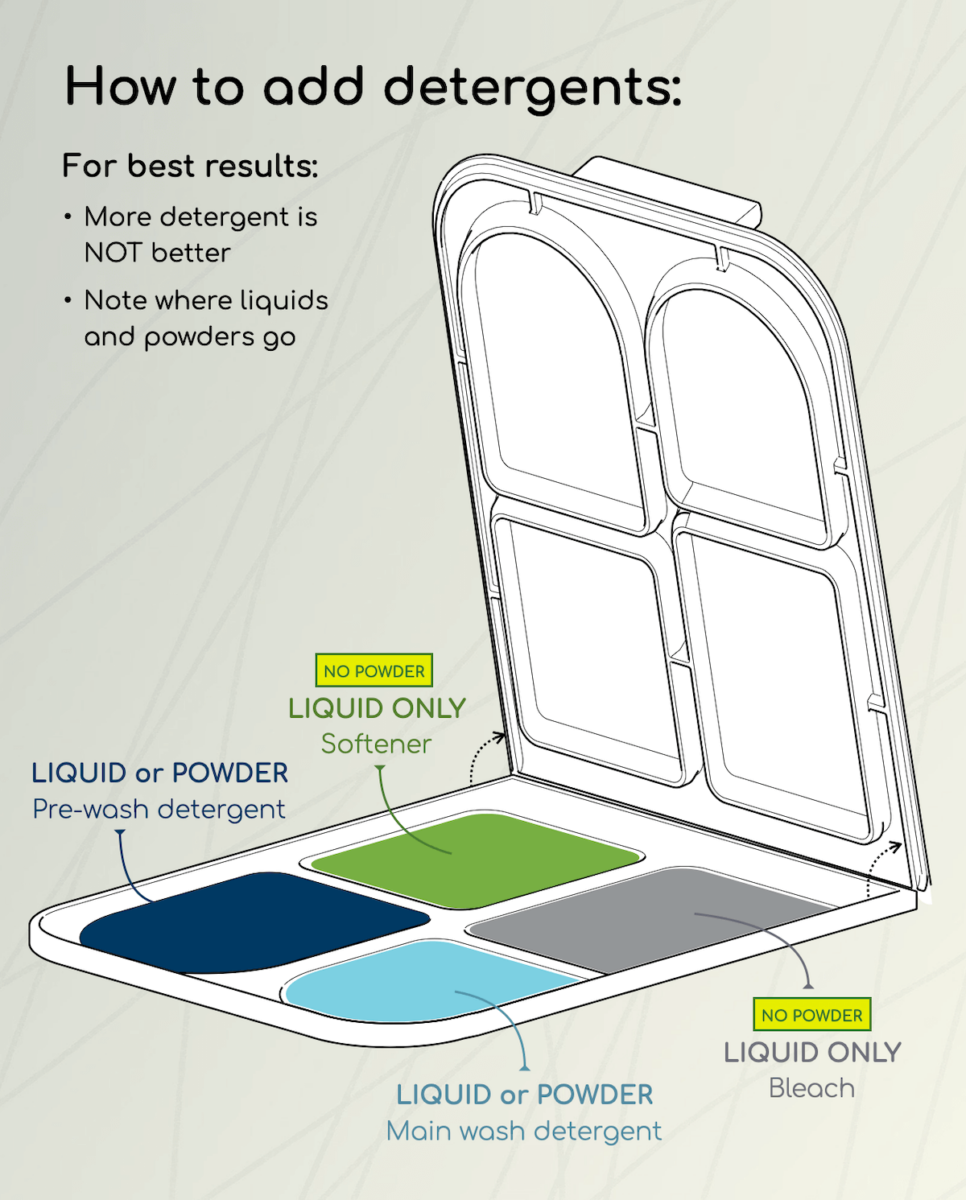Prepare your clothes
Pay attention to labels
Fabric care labels are like secret codes that help you do laundry the right way! They tell you things like how hot or cold to wash, if you can use bleach, and how to dry your clothes.
Separate into piles
It takes some practice to eye-ball this step. For the best results, you’ll want to wash colours and fabrics separately. To begin, you can sort clothes by:
Colour shades
Dark-coloured clothes can stain lighter clothes.
Fabric weight
Wash heavier items like towels separately from lightweight clothes to prevent damage to delicate fabrics.
Fabric type
Wash delicate fabrics separately, using the correct wash cycles to prevent damage. Keep items with zippers and buttons away from knits and lingerie to avoid snags or tearing.
How dirty they are
Wash heavily soiled laundry separately using a longer, heavy-duty cycle.
Optional: Stain removal
You can make a detergent slurry by mixing some detergent with water. Rub this directly into the fabric, and let it sit up to half hour before washing (longer for tough stains).
Choose the right size machine
Choosing the correct machine size is an important step towards brilliant results. To avoid overloading your washing machine, try the “palm trick.” Simply place your hand into the drum after loading your clothes. If your hand fits effortlessly between the clothes and the drum wall, you’ve got the perfect load size. This ensures your clothes have enough space to tumble.
How much laundry is a “load?” Find out here.
See pricing and machine size chart
How to add detergents
The detergents are added via the opening on the top of the washing machines. Note that there are designated places for powders and liquids. Refer to the diagram below.

How much detergent to use
Using too little or too much detergent can lead to poor results. We have high-efficiency washers that use less water. Overfilling the washer or using too much detergent means there may not be enough water to completely dissolve the detergent.
If your garments are very dirty, you might want to use a larger washer instead. With the extra water, detergent and drum size, your garments will have more room to move and reduces dirt going back onto your clothes.
Refer to your detergent instructions for the correct amount to use per load.
Select correct temperature
Hot setting
Hot water removes the toughest stains and gives garments a deep clean. However there is a change of fading and shrinking, especially with some fabric types.
Suitable for whites, cotton fabrics, socks, bed sheets, heavily soiled garments, baby clothes.
Warm setting
Good cleaning power for preserving colours with reduced change of fading or risk of shrinking.
Suitable for synthetics, permanent-press fabrics, towels.
Cold setting
Saves the most energy while also being the most gentle on clothing.
Suitable for dark colours, bright colours that may run or fade, delicate fabrics, lightly soiled fabrics, anything that might shrink.
Don’t leave wet items in the washer
Take laundry out of the washer immediately to prevent musty smells from forming.